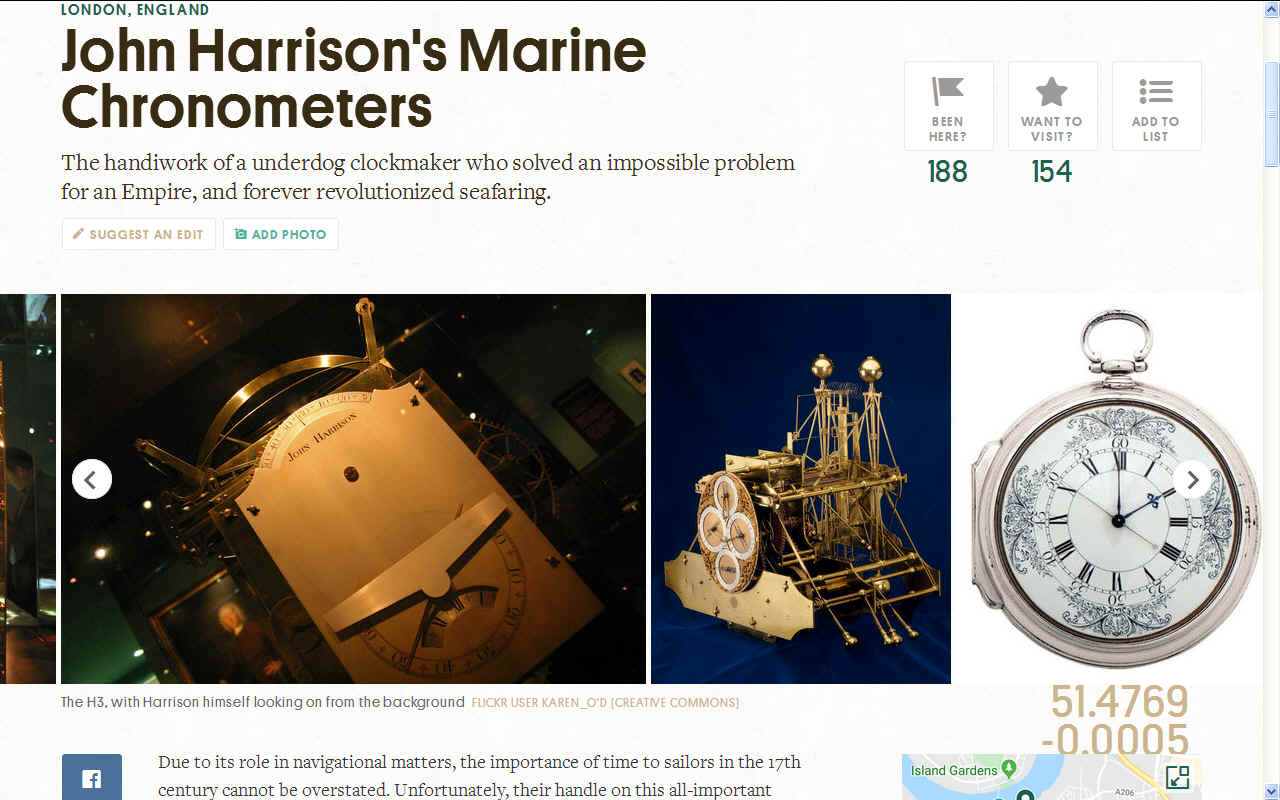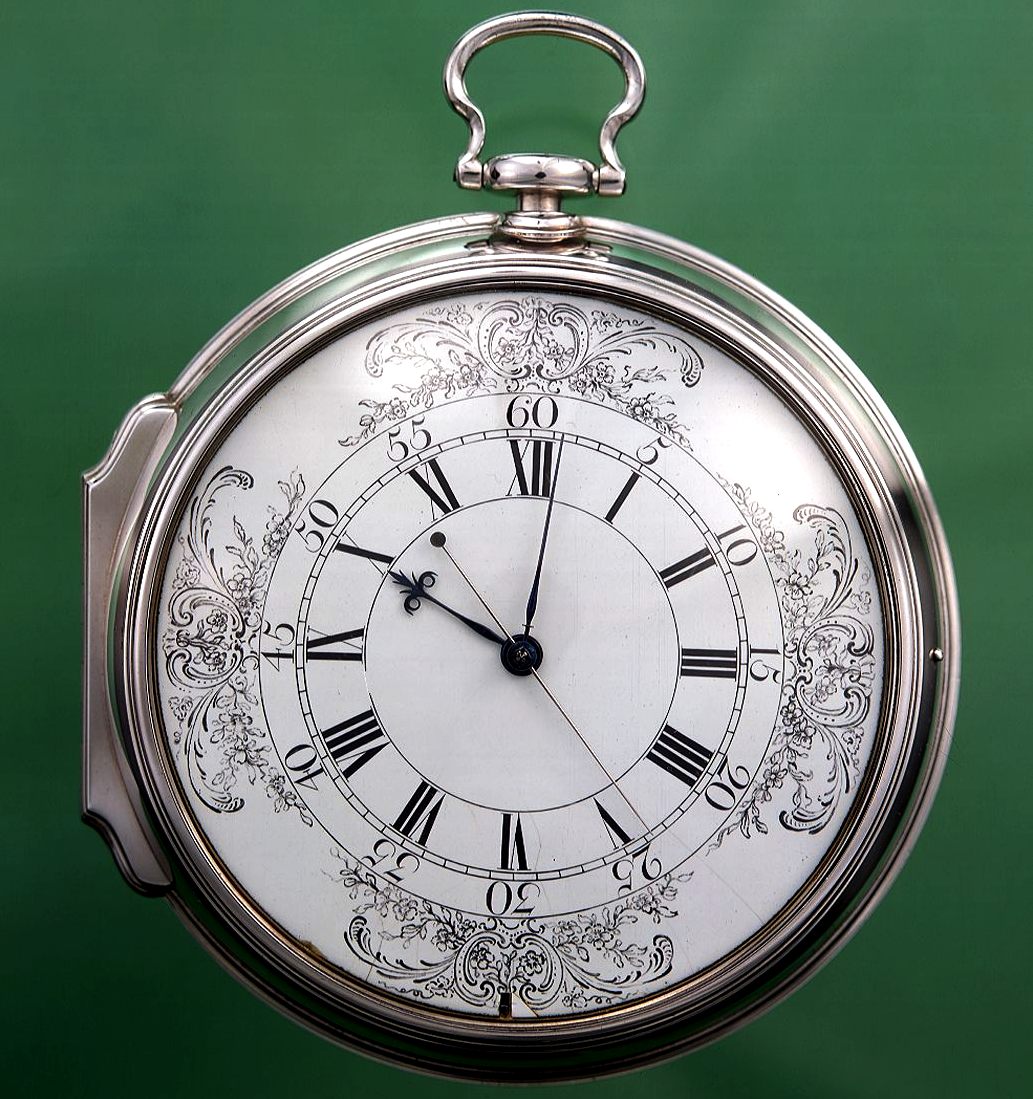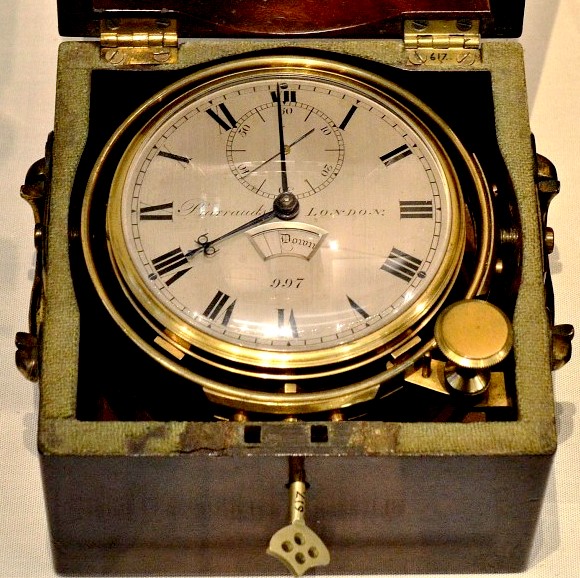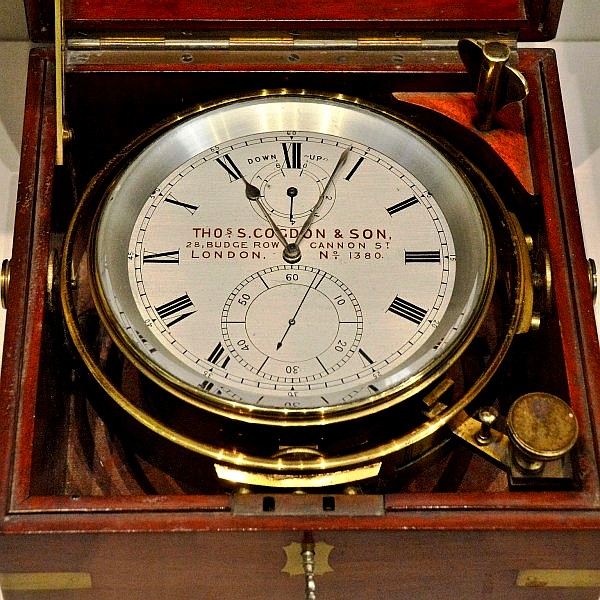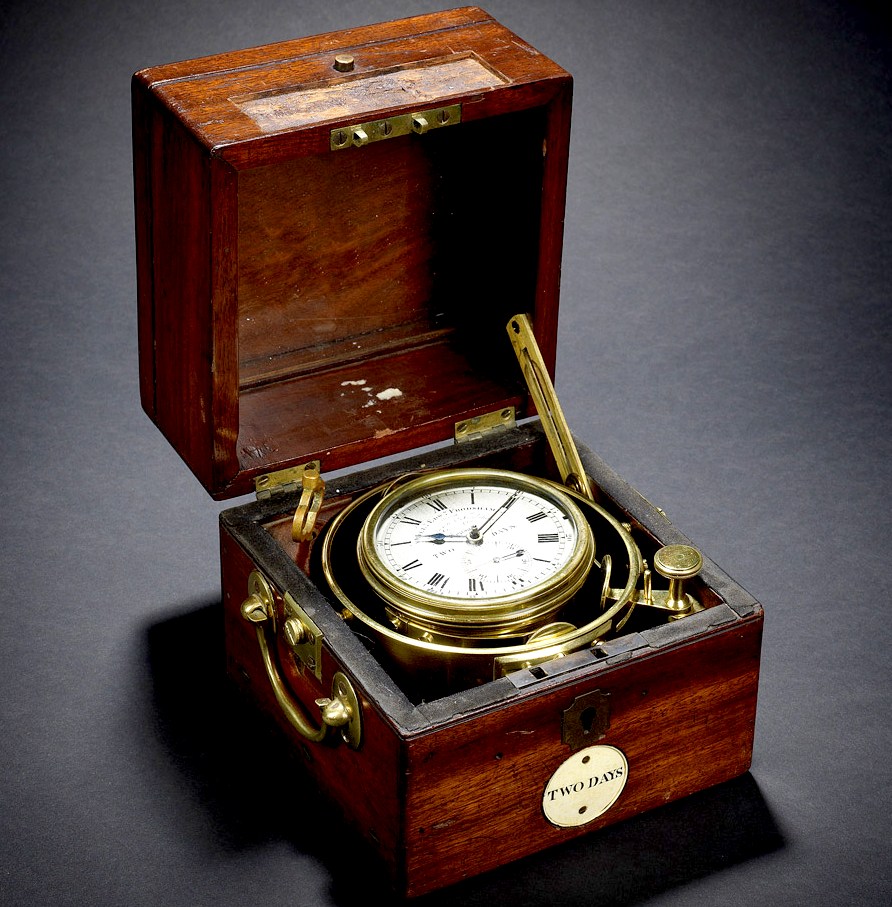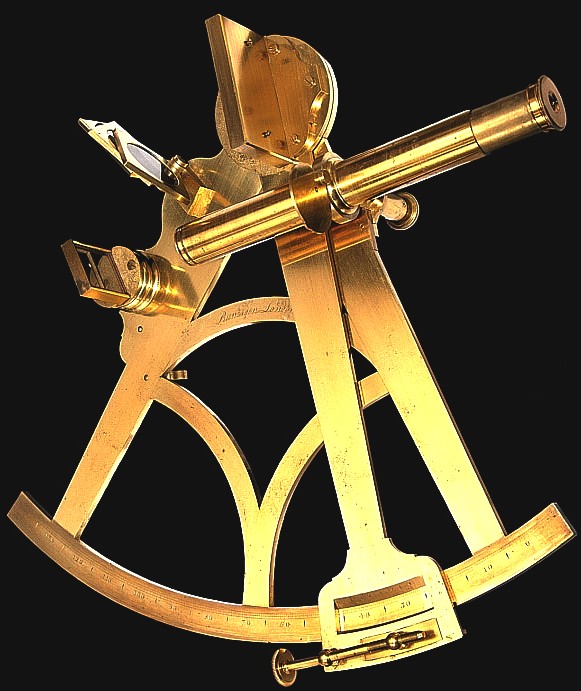|
THE MARINE CHRONOMETER
PLEASE USE OUR A TO Z INDEX TO NAVIGATE THIS SITE |
|
John Harrison's genius as a practical engineer was finally recognised in the award of £20,000 despite the academic community doing their best to thwart his success.
Several unfortunate disasters at sea, caused ostensibly by poor
navigation, prompted A Petition by sailors that persuaded the British government to create a
Board of
Longitude, who were empowered to award £20,000 to the first man to solve the navigational problem to develop a means with which longitude could be calculated within half a degree at the end of a voyage to the West Indies.
The H4 marine chronometer, as perfected by John Harrison many years before his death in 1776. It was the size of a large pocket watch.
Although his chronometers all met the standards set up by the Board of Longitude, he was not awarded any money until 1763, when he received £5,000, and not until 1773 was he paid in full.
The only feature of his chronometers retained by later manufacturers was a device that keeps the clock running while it is being wound.
Why? because academic boards invariably shy away from an obvious solution, forgetting the urgency that triggered the need so that they might pursue a utopian technology dream that might be hundreds of years away, for the sake of conforming.
A collection of beautifully crafted marine chronometers from various makers in London, all in wooden boxes with gimbal mounts. These wonderful instruments provided the solution that sailors all over the world were looking for. They are on display at the London Science Museum and Greenwich Maritime Museum.
SOLUTIONS
- The chronometer was vital to the ability to create charts and safely navigate the world. The first chronometers were invented by a carpenter's son:
John
Harrison.
This gimbaled Marine Chronometer seen above was one on H.M.S. Beagle during its second voyage (1831-1836) with Charles Darwin onboard. It sailed to the coast of South America, across the South Pacific towards the Galapagos Islands, New Zealand and Australia, in order to help establish a chain of reliable navigational co-ordinates around the globe.
SEXTANT - The principle of the sextant was first implemented around 1731 by John Hadley (1682–1744) and Thomas Godfrey (1704–1749). A sextant is a doubly reflecting navigation instrument that measures the angular distance between two visible objects. The primary use of a sextant is to measure the angle between an astronomical object and the horizon for the purposes of celestial navigation.
LINKS & REFERENCE
https://www.atlasobscura.com/places/john-harrisons-marine-chronometers https://www.britannica.com/biography/John-Harrison-British-horologist
|
|
This website is Copyright © 2020 Bluebird Marine Systems Limited. The name Bluebird™ is a registered trademarks.
|
